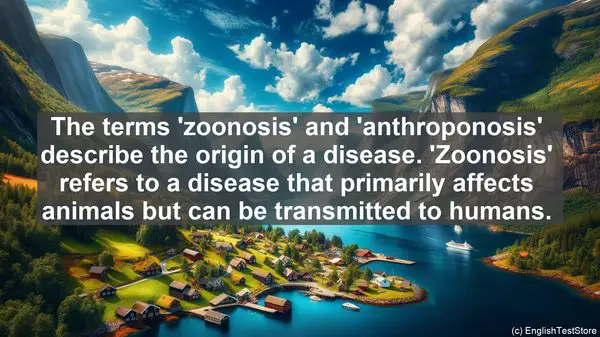Introduction
Today, we are going to delve into the fascinating world of zoonotic pathology. As you embark on your journey in this field, it’s crucial to have a strong grasp of the terminology. However, some words can be quite tricky, leading to confusion. In this lesson, we will shed light on the top 10 commonly confused words in zoonotic pathology, ensuring you have a solid foundation. Let’s get started!
1. Endemic vs. Epidemic
The terms ‘endemic’ and ‘epidemic’ are often used interchangeably, but they have distinct meanings. ‘Endemic’ refers to the constant presence of a disease in a particular population or area. On the other hand, ‘epidemic’ signifies a sudden increase in the number of cases of a disease, surpassing what is typically expected. Understanding the difference is crucial for effective disease management strategies.

2. Incidence vs. Prevalence
When discussing the occurrence of a disease, ‘incidence’ and ‘prevalence’ are frequently mentioned. ‘Incidence’ refers to the number of new cases of a disease within a specific time period. On the other hand, ‘prevalence’ represents the total number of cases, both new and existing, within a given population. These measures provide valuable insights into the burden of a disease.
3. Vector vs. Reservoir
In the context of zoonotic diseases, ‘vector’ and ‘reservoir’ are often confused. A ‘vector’ is an organism, typically an arthropod, that transmits a pathogen from one host to another. On the other hand, a ‘reservoir’ is a population or environment where the pathogen naturally exists, and from which it can be transmitted to other hosts. Understanding these roles is essential for disease control strategies.
4. Carrier vs. Infected
When discussing disease transmission, it’s important to differentiate between a ‘carrier’ and an ‘infected’ individual. A ‘carrier’ is someone who harbors a pathogen but may not show any symptoms. In contrast, an ‘infected’ individual exhibits clinical signs of the disease. Both carriers and infected individuals can contribute to disease spread, making their identification crucial.
5. Zoonosis vs. Anthroponosis
The terms ‘zoonosis’ and ‘anthroponosis’ describe the origin of a disease. ‘Zoonosis’ refers to a disease that primarily affects animals but can be transmitted to humans. On the other hand, ‘anthroponosis’ describes a disease that primarily affects humans. Understanding these terms helps in identifying the potential sources of infection.

6. Pathogen vs. Toxin
In the context of disease causation, ‘pathogen’ and ‘toxin’ are often mentioned. A ‘pathogen’ is a microorganism, such as a bacterium or virus, that can cause disease. On the other hand, a ‘toxin’ is a harmful substance produced by a microorganism that can cause illness. Both pathogens and toxins play crucial roles in disease development and progression.
7. Quarantine vs. Isolation
During disease outbreaks, ‘quarantine’ and ‘isolation’ measures are implemented. ‘Quarantine’ refers to the restriction of movement for individuals who have been exposed to a disease, even if they are not showing symptoms. ‘Isolation,’ on the other hand, is the separation of individuals who are already infected, to prevent further transmission. These measures are vital in controlling the spread of diseases.
8. Disinfection vs. Sterilization
When it comes to cleaning and decontamination, ‘disinfection’ and ‘sterilization’ are two important processes. ‘Disinfection’ refers to the elimination of most pathogenic microorganisms, reducing their numbers to a safe level. ‘Sterilization,’ on the other hand, aims to completely eliminate all microorganisms, including their spores. The choice between these processes depends on the level of decontamination required.
9. Prophylaxis vs. Treatment
In the realm of disease management, ‘prophylaxis’ and ‘treatment’ are distinct approaches. ‘Prophylaxis’ involves measures taken to prevent the occurrence of a disease, such as vaccination or the use of preventive medications. ‘Treatment,’ on the other hand, focuses on alleviating the symptoms and curing the disease. Both approaches are crucial for effective disease control.
10. Surveillance vs. Monitoring
When it comes to disease tracking, ‘surveillance’ and ‘monitoring’ are key. ‘Surveillance’ involves the systematic collection, analysis, and interpretation of data to inform public health actions. ‘Monitoring,’ on the other hand, refers to the ongoing observation of a situation, often to detect changes or trends. Both processes provide valuable insights into disease patterns.
